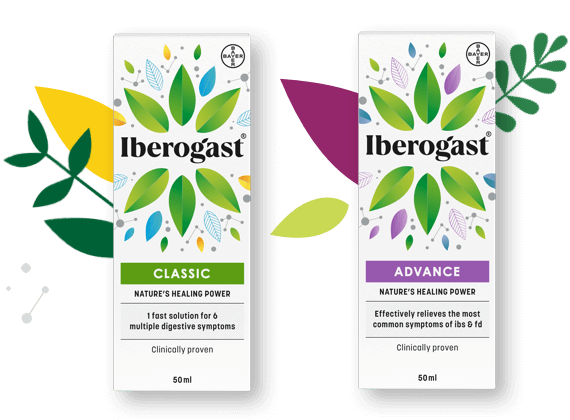The all-rounder for gastrointestinal complaints
The first mention of Iberis amara happened a long, long time ago: The Greek physician Galenos (131 - 215 A.D.) is said to have treated an Iberian patient with the flowers of the bitter candytuft. In the late Middle Ages it was used as an easily obtainable home remedy for cramps and inflammations, usually in the form of wine or a tonic. Today the medicinal plant is used as part of the combination preparation Iberogast® especially for symptoms of the gastrointestinal tract: These include not only bloating or abdominal cramps, but also feeling of fullness or nausea.
The first mention of Iberis amara happened a longtime ago: The Greek physician Galenos (131 – 215 after christ) is said to have treated an Iberian patient with the flowers of the bitter candytuft. In the late Middle Ages it was used as an easily obtainable home remedy for cramps and inflammations, usually in the form of wine or a tonic.
The rocky shores of the Mediterranean Sea were the perfect ground for this highly adaptable plant. Nowadays it’s often used to fill out rock gardens across Europe.
The extracts from Bitter candytuft can regulate acid production and contributing to protect the mucosa. Iberis amara also protects against the formation of free radicals thanks to the plant substances it contains. Patients suffering from functional GI disorders may benefit due to its tonicizing effect on the intestinal musculature.
As part of Iberogast® the Bitter candytuft has the extraordinary ability to affect the gastrointestinal motility.
Bitter candytuft is produced in Germany for pharmaceutical processing. The plant favors warm, dry, calcareous and sandy loam soil. It is cultivated by sowing seeds in spring.
Weeds are removed both by hand and mechanically using a rotary hoe and/or harrow in spring. Synthetic chemical pesticides are not used.
The optimum harvesting time is from June, right before full bloom. The entire plant, including the roots, is harvested by hand and then frozen as a fresh plant. This ensures that the freshly harvested plant does not deteriorate and retains its valuable nutrients for later processing.
Interesting facts about Iberis amara
Did you know, that:
- the Bayer Vital GmbH grows bitter candytuft in large cultures around the company headquarters in Darmstadt? And it has been doing that for over 50 years.
- the wild-breeding medicinal plant is threatened with extinction in Germany? Isolated patches occur only on fields and in vineyards in the southwest.
- the iberis amara flowers smell sweet, but taste bitter?
- the bitter candytuft flowers bloom annually from May to August?

The origins of Iberis amara
The rocky shores of the Mediterranean Sea were the perfect ground for this highly adaptable plant. Nowadays it’s often used to fill out rock gardens across Europe, with its tiny lacy white flowers, which are a perfect companion for late blooming plants. Each candytuft flower has four different-sized white petals, resembling a small bow.
Iberis amara’s has a sweet smell, but tastes quite bitter – and this is part of its name. It derives from the latin word “amarus”, which means bitter. The genus name “Iberis” is Greek and means "cress". It is also possible, however, that the name comes from the ancient Romanic name of Spain (Iberia), where the plant grew and, as already mentioned, found its first known patient.
The name “bitter candytuft” also reminds of its origins, even though it’s reminiscent of the other side of the Mediterranean. “Candytuft” isn’t connected to sweet-tasting sweets, but to Candia, one of the old names for Heraklion, the biggest city on the island of Creta, where the plant used to grow in abundance.
Nowadays the plant is classified as endangered in some countries, as agriculture has over a big part of its natural habitat.
The effect of Iberis amara on the gastrointestinal tract
The medicinal plant has the extraordinary ability to affect the gastrointestinal motility. Its bitter extract has a tonicizing effect on slack muscles such as in the lower, transporter area of the stomach. This last property can help counteract feelings of fullness.
As part of Iberogast®, the extracts from dried bitter candytuft flowers can quickly combat feelings of fullness, while additionally regulating acid production and contributing to protect the mucosa and thus, might relieve heartburn. Iberis amara also protects against the formation of free radicals thanks to the plant substances it contains. Patients suffering from functional GI disorders may also benefit from the medicinal plant in Iberogast® due to its tonicizing effect on the intestinal musculature.
At a glance: The effect of bitter candytuft in Iberogast
The following table shows the different active benefits of iberis amara in Iberogast®:
| Active benefits of iberis amara in the frame of irritable stomach | |
| Activation of the musculature in the lower stomach | |
| Relaxation of the musculature in the upper stomach | |
| Anti-inflammatory | |
| Regulation of acid production | |
| Protection of the mucosa |
Legend:
| High impact | |
| Medium impact | |
| Light impact |
The below video is an example only. Please localize the videos in the content packages (can be found on eDAM) and here with your local market Vimeo/YouTube links
This is a sample video only. Please replace with your own local country Vimeo/YouTube videos.
Buy Iberogast® prescription-free from your pharmacy.
Get the power of nature into your home!

Abdel-Aziz, H., O. Kelber, G. Lorkowski and M. Storr “Evaluating the Multitarget Effects of Combinations through Multistep Clustering of Pharmacological Data: the Example of the Commercial Preparation Iberogast.” Planta Med, 2017. 83(14/15): 1130–1140.
Company Core Data Sheet Iberogast, Version 03 from Nov, 2 2018.
Kelber O., B. Steinhoff, C. Nauert, A. Biller, M. Adler, H. Abdel-Aziz, S. N. Okpanyi, K. Kraft and K. Nieber “Ethanol in herbal medicinal products for children: Data from pediatric studies and pharmacovigilance programs.” Wien Med Wochenschr, 2017. 167(7–8): 183–188.
Kroll, U., C. Cordes "Pharmaceutical prequisites for a multi-target therapy." Phytomedicine, 2006. 13: 12-19.
Braden, B., W. Caspary, N. Börner, B. Vinson and A. R. J. Schneider “Clinical effects of STW 5 (Iberogast®) are not based on acceleration of gastric emptying in patients with functional dyspepsia and gastroparesis.” Neurogastroenterology & Motility, 2009. 21(6): 632–e625.
Buchert, D. “Wirkung einer fixen Kombination bei gesicherter Non-Ulcus-Dyspepsie.” Z Phytother, 1994. 15: 24-25.
Gundermann, K. J., E. Godehardt and M. Ulbrich “Efficacy of a herbal preparation in patients with functional dyspepsia: a meta-analysis of double-blind, randomized, clinical trials.” Adv Ther, 2003. 20(1): 43–49.
Madisch, A., H. Melderis, G. Mayr, I. Sassin and J. Hotz “Ein Phytotherapeutikum und seine modifizierte Rezeptur bei funktioneller Dyspepsie.” Z Gastroenterol, 2001. 39(07): 511–517.
Madisch, A., G. Holtmann, K. Plein and J. Hotz “Treatment of irritable bowel syndrome with herbal preparations: results of a double-blind, randomized, placebo-controlled, multi-centre trial.” Aliment Pharmacol Ther, 2004. 19(3): 271–279.
Melzer, J., W. Rosch, J. Reichling, R. Brignoli and R. Saller “Meta-analysis: phytotherapy of functional dyspepsia with the herbal drug preparation STW 5 (Iberogast).” Aliment Pharmacol Ther, 2004. 20(11-12): 1279–1287.
Rösch, W., B. Vinson and I. Sassin “A randomised clinical trial comparing the efficacy of a herbal preparation STW 5 with the prokinetic drug cisapride in patients with dysmotility type of functional dyspepsia.” Z Gastroenterol, 2002. 40(6): 401–408.
von Arnim, U., U. Peitz, B. Vinson, K. J. Gundermann and P. Malfertheiner “STW 5, a phytopharmacon for patients with functional dyspepsia: results of a multicenter, placebo-controlled double-blind study.” Am J Gastroenterol, 2007. 102(6): 1268–1275.
Mueller, M. H., H. Seeliger, N. Hering, M. S. Kasparek, A. H. Abdel and M. E. Kreis “Differential Desensitisation of Afferent Nerve Fibres by Iberis amara (STW 6) and Iberogast (STW 5) in the Murine Colon.” Am J Phytomed Clin Ther, 2018. 6(1:4).
Hohenester, B., A. Rühl, O. Kelber and M. Schemann “The herbal preparation STW5 (lberogast) has potent and region-specific effects on gastric motility.” Neurogastroenterol Motil, 2004. 16(6): 765–773.
Pilichiewicz, A. N., M. Horowitz, A. Russo, A. F. Maddox, K. L. Jones, M. Schemann, G. Holtmann and C. Feinle-Bisset “Effects of Iberogast on proximal gastric volume, antropyloroduodenal motility and gastric emptying in healthy men.” Am J Gastroenterol, 2007. 102(6): 1276–1283.
Reichling, J. and R. Saller “Iberis amara L. (Bittere Schleifenblume) – Profil einer Heilpflanze.” Forsch Komplementärmed Klass Naturheilkd, 2002. 9: 21–33.
Iberis, Hager ROM 2003, Springer Verlag, Heidelberg 2003, HN: 2001400.
Khayyal, M. T., M. A. el-Ghazaly, S. A. Kenawy, M. Seif-el-Nasr, L. G. Mahran, Y. A. Kafafi and S. N. Okpanyi “Antiulcerogenic effect of some gastrointestinally acting plant extracts and their combination.” Arzneimittelforschung, 2001. 51(7): 545–553.
Khayyal, M. T., M. Seif-El-Nasr, M. A. El-Ghazaly, S. N. Okpanyi, O. Kelber and D. Weiser “Mechanisms involved in the gastro-protective effect of STW 5 (Iberogast) and its components against ulcers and rebound acidity.” Phytomedicine, 2006. 13 (Suppl 5): 56–66.
Germann, I., D. Hagelauer, O. Kelber, B. Vinson, S. Laufer, D. Weiser, H. Heinle "Antioxidative properties of the gastrointestinal phytopharmaceutical remedy STW 5 (Iberogast)." Phytomedicine, 2006. 13: p. 45-50.
Schempp, H., A. Toth, D. Weiser, E. F. Elstner "Antioxidative properties of Iberis amara extracts in biochemical model reactions." Arzneimittelforschung, 2003. 13677247
Schempp, H., S. Hippeli, D. Weiser, O. Kelber, E. F. Elstner "Comparison of the inhibition of myeloperoxidase-catalyzed hypochlorite formation in vitro and in whole blood by different plant extracts contained in a phytopharmacon treating functional dyspepsia." Arzneimittelforschung, 2004. 54(7):389-95.
Wald, K., O. Kelber, D. Weiser, S. Laufer, H. Heinle "Antioxidant properties of STW 5 and its single extracts on histamine-induced radical production of murine ileum." Z Phytother, 2009. 30(Suppl. 1): p. S36.








